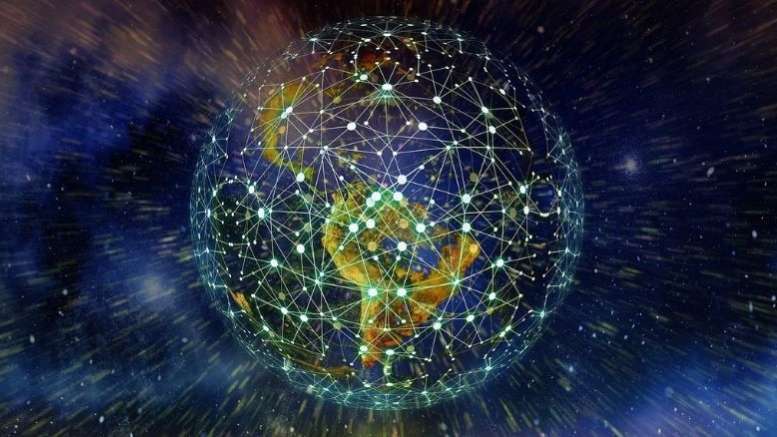In the heart of a region better known for luxury condos, cruise ports, and palm-lined coastlines, a quieter revolution is unfolding. South Florida—a region long burdened by sprawling development, fragile ecosystems, and waste-heavy industries—is becoming an unlikely proving ground for one of the world’s most hopeful economic transformations: the circular economy.
By Mobilized News Editorial Staff
In the heart of a region better known for luxury condos, cruise ports, and palm-lined coastlines, a quieter revolution is unfolding. South Florida—a region long burdened by sprawling development, fragile ecosystems, and waste-heavy industries—is becoming an unlikely proving ground for one of the world’s most hopeful economic transformations: the circular economy.
From community composting programs and zero-waste fashion collectives to solar-powered waste-to-energy facilities and plastic-to-product startups, the region is showing what it means to design out waste, keep materials in use, and regenerate natural systems—the three guiding principles of the circular economy.
More importantly, South Florida is demonstrating how localized, community-driven innovation can power the shift from linear “take-make-throw” models to regenerative systems that protect both people and the planet.
What Is the Circular Economy?
The circular economy flips the traditional industrial system on its head. Rather than extracting finite resources, producing short-lived goods, and sending them to landfills, the circular economy aims to create loops of reuse, repair, recycling, and regeneration.
It’s a vision where waste becomes input, products are designed to last, and communities reap the benefits of local ownership, cleaner environments, and stronger economic resilience.
And while the concept is global, South Florida is localizing it in powerful ways.
South Florida’s Circular Champions
1. The Solid Waste Authority (SWA) of Palm Beach County
One of the most advanced public waste management systems in the United States, SWA turns garbage into electricity through a state-of-the-art waste-to-energy facility. The system diverts 90% of the county’s post-recyclable waste from landfills and powers over 40,000 homes.
- Impact: Reduces methane emissions, generates clean energy, and captures metals for reuse.
- Lesson: Public infrastructure investment in circular systems pays off—both economically and environmentally.
2. Debris Free Oceans (Miami)
This nonprofit takes circularity to the streets—literally. Through education, beach cleanups, and innovative partnerships with bars, restaurants, and events, Debris Free Oceans champions reuse over single-use. Their “zero waste lifestyle” campaigns have made reusable cups and containers the new cool in Miami nightlife and school cafeterias alike.
- Impact: Tens of thousands of single-use plastics diverted from landfills and marine ecosystems.
- Lesson: Behavior change begins with community identity and local culture.
Smart Design + Sustainable Fashion
Boutiques like Antidote in Wynwood and pop-ups like Fashion Revolution Miami are part of a growing network of South Florida designers championing zero-waste fashion, upcycled materials, and regenerative fibers. Local fashion schools like Istituto Marangoni now offer courses in circular design.
- Impact: Elevated consumer awareness of fashion waste and rise in sustainable labels and resale.
- Lesson: Creative industries can lead the way by reimagining material value.
Local Food Waste & Compost Networks
Organizations like Fertile Earth Foundation and Ready-to-Grow Gardens are bringing composting and soil regeneration into homes, schools, and community gardens. In Miami-Dade, pilot curbside composting programs have begun showing how nutrient cycling can nourish both food systems and communities.
- Impact: Food waste is transformed into soil, reducing methane emissions and supporting local agriculture.
- Lesson: Circularity starts in the kitchen—and grows in the garden.
Policy and Education Driving Change
South Florida’s shift toward circularity is also happening in city halls and classrooms. Municipal sustainability offices in cities like West Palm Beach, Coral Gables, and Miami Beach are integrating circular economy goals into climate action plans, procurement policies, and public infrastructure projects.
At Florida International University and Miami Dade College, programs in urban sustainability and circular materials science are preparing a new generation of leaders to think regeneratively, not extractively.
What Can Other Communities Learn?
South Florida’s success didn’t come from having the best tech or the deepest pockets. It came from recognizing the urgency of ecological limits and leveraging local assets creatively. Here’s what other communities can take away:
Start with What You Waste
Audit your city’s biggest waste streams—textiles, food, plastic, construction materials—and create targeted recovery programs.
Localize the Loop
Keep materials, energy, and jobs within your community. Build local repair cafes, material reuse depots, and circular co-ops.
Engage the Cultural Fabric
Connect the circular economy to local identity—through art, music, food, fashion, and storytelling.
Bridge Policy with Practice
Empower local governments to mandate circular procurement, support startups, and incentivize sustainable infrastructure.
Make It Easy—and Fun
Accessibility and joy are key. Reuse shouldn’t feel like a chore—it should feel like a movement.
A Model for the Regenerative Future
South Florida is still facing major climate risks—sea level rise, extreme heat, and resource stress among them. But by embracing circular economy principles, it’s rewriting its story from one of fragility to one of resilience, innovation, and community power.
In a world rapidly approaching ecological overshoot, the answers don’t always lie in more consumption, more tech, or more extraction. Sometimes, they lie in less. In smarter systems. In circular choices. And in the wisdom of local communities who are learning to close loops, not just fill gaps.
“The circular economy isn’t just about recycling—it’s about redesigning the way we live, consume, and coexist.”
— Mobilized News
Resources to Get Started in Your Community:
